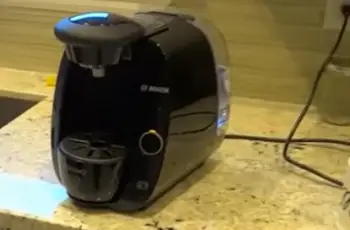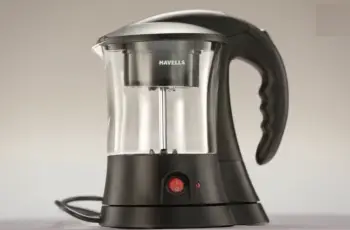A coffeemaker is one of those things that can be found in most offices and homes. Many people drink coffee in the morning and others drink it all day long. When the coffee maker starts to leak, whether it is leaking hot water or hot coffee, it can be a huge problem. When properly cared for, your coffee maker can provide you with years of service and hundreds of cups of coffee. If it starts leaking, it is essential that you find a solution as quickly as possible.
We loved this coffee maker and the tasty coffee it produced. But after just a year of ownership, it started leaking water out of the bottom when we filled the reservoir. We did a Google search and discovered this is a widespread problem with these units. There are two internal rubber water hoses that get brittle very quickly and leak clear water out of the bottom as (or before) the coffee maker can make a pot of coffee.
We always staged our coffee on a timer the night before and suddenly started awaking to floods on our kitchen floor dripping off the counter. We finally realized it was the Cuisinart, so we started filling and brewing as fast as possible and then wiped up the mess with paper towels. It also didn’t seem very safe having an electrical unit sitting in a puddle of water, so we did some research and figured out how to fix the problem and keep our Cuisinart working! Cuisinart wasn’t very helpful and even denied the problem existed, yet there are hundreds of complaints on the web detailing the problem.
When does a coffee machine lose water?
When this happens to your coffee maker, it is usually not due to a single, specific cause: many factors can influence whether a coffee maker loses water. In this article, we will try to collect the most common ones and provide some practical solutions for them. Interestingly, many users have the exact opposite problem; as we can see in the article entitled my Dolce Gusto, coffee maker does not pour water. Anyway, let’s get to the point: if your coffee maker is leaking, read on because you will probably find the explanation and the solution in the following lines. We will distinguish between three main groups of cases in which a coffee maker loses water.
My coffee machine loses water
It is a very common problem in espresso machines (manual, above all), but it can also occur in capsule machines. It happens when, when starting the coffee machine, we observe that it loses water through its base. A small puddle of water – or not so little depending on how it leaks – will form on your worktop and will appear underneath the coffee maker as soon as you get careless.
If your brewer is leaking water underneath, it’s probably because of a broken component or a poorly sealed seal. To find out, first, disassemble the brewer and check which parts are susceptible to water leakage. To disassemble the brewer, you’ll need a screwdriver and remove the back panels. Maybe the top one too. Of course, this depends on the particular model of brewer. Also, remember that this should only be done if the warranty on your coffee machine has already expired. If you have it under warranty, do not open it because it will invalidate it. It is better to take it directly to the technical service.
The most common elements that may leak are the water tank and the boiler (where the water passes through to heat it).
To check the water tank, remove it and make sure that it is not broken anywhere and that the connections to the body of the coffee machine are in perfect condition. The widespread problem is that the rubber gasket that seals the joint between the tank and the coffee maker has deteriorated over time. If this happens to you, we recommend that you go to a hardware store with your coffee maker and buy a gasket of the right shape and diameter to fit perfectly.
It will only cost you a few cents, you won’t need to dismantle the coffee maker, and you’ll be sure to have that connection well sealed for a long time. About the boiler, the problems usually come from the seal that joins the heat resistance to the pan itself. The water circuit continually passes through this point, and if the joint is damaged or deteriorated over time, it will escape, leaving a dark stain on the wall of the boiler and dripping out.
Repair a Leaking Coffeemaker
Step 1 – Clean
If your coffee maker seems to be clogged, try cleaning it with a mixture of white vinegar and water. Assuming that your coffee maker has a 12 cup capacity you will want to use 11 cups of vinegar and 1 cup of water. Fill the coffee pot to the 11 cup mark with vinegar and then fill it to the 12 cup mark with water.
Pour this mixture into the reservoir and turn on the coffee maker, allowing it to run through a brewing cycle as if you were making a pot of coffee. By doing this you will dissolve any buildup in your coffee maker. If the coffee maker is leaking because the pump is clogged, then this might clear the clog and stop the leaking. If it has been a while since you last cleaned your coffee maker, you may need to run the vinegar through more than one cleaning cycle to dissolve all of the buildups.
Step 2 – Inspect the Pump Valve
Unplug the coffee maker and examine the pump valve. If the pump valve is broken or has a clog, then the water will not be able to rise up and flow through the fill tube. When the coffee maker is turned on, the water needs to go someplace. If it cannot flow through the fill tube, then it may leak onto the countertop. If the pump in your coffee maker is sealed, you will need to replace the whole pump. If the pump is not sealed you should check it to ensure it is not clogged with coffee grounds or mineral deposits.
Step 3 – Look at the Brew Switch
Examine the brewing switch to ensure that is working. To get to the brewing switch, remove the base plate. Next, you will need to test the switch with your volt-ohmmeter. Touch the tester to the RX1 scale. If it reads 0 ohms then you will know that the switch works fine. If it gives you a number other than 0 then it is time to replace the switch.
Step 4 – Inspect the Tube Connectors
If the coffee maker is leaking or sputtering then you should take a look at the tube connectors. Many times, a leaky coffee maker is caused by faulty tube connectors. If you find the leak is in an elbow, clean the surfaces before you replace it. If the tube connector leaks, replace both the tube and the elbow so that you can be sure the pieces will both fit together properly.


